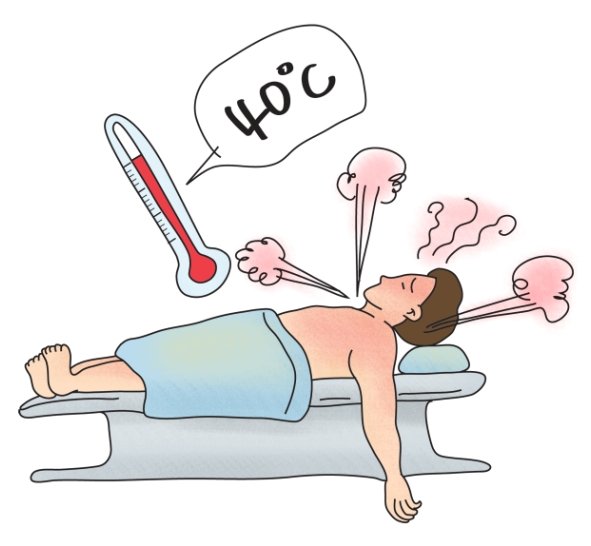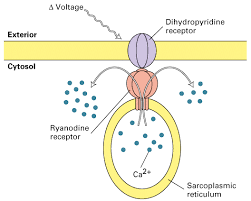Many of you will have heard of hypothermia, a life-threatening decrease in body temperature. While hyperthermia is the opposite, a dangerous increase in body temperature. However, there are various other conditions that can cause a rise in temperature, aside from hyperthermia, the most common of which is a fever.

figure 1. Hyperthermia
What is the difference between fever and hyperthermia?
A fever does cause a rise in body temperature, however, it is set aside from other hyperthermic conditions for two reasons. Firstly the rise in body temperature during a fever is regulated and is controlled by the normal thermoregulatory mechanisms of the body. Secondly, fevers produce an increase in the actual set-point of normal body temperature, which causes this rise. Rather than temperature increasing exponentially, as with other hyperthermias, body temperature will oscillate around this higher set-point during a fever.
In contrast, hyperthermia is characterised by a rise in temperature due to a complete loss of thermoregulatory mechanisms.
What is malignant hyperthermia?
A specific type of hyperthermia triggered by drugs, usually anaesthetics. It causes a rapid and uncontainable rise in body temperature, which commonly resulted in death. The volatile anaesthetic halothane is the main culprit in triggering this disease, but the drug succinylcholine can have the same effect. The frequency of occurrence in humans is estimated as 1:15,000 in children and 1:50-100,000 in adults. The conditions is genetic and follows an autosomal dominant pattern of inheritance.
What causes malignant hyperthermia?
The pathophysiology of malignant hyperthermia is complex and the full mechanisms by which volatile anaesthetics cause the disease are still unknown.
The cause of malignant hyperthermia is basically due to the dysregulation of mechanisms the control muscle contraction. As mentioned here, in the presence of Ca2+ myosin head binding sites on actin are constantly available for binding and continual muscle contraction. This is the cause of malignant hyperthermia. A vast leakage of Ca2+ from the sarcoplasmic reticulum in muscles causes continual muscle contraction. While many ATP pumps attempt to return the Ca2+ to their stores in a futile cycle. This continual cycle consumes energy and generates heat within the body.
There is a consequent rise in O2 consumption, CO2 output leading to acidosis, tachycardia and heat generation. Retrieval of Ca2+ by the ATP pumps may be incomplete, causing prolonged muscle contraction. Eventually muscle cells break down and leak into the blood. The resulting heat output warms up the blood and a rapid rise in body temperature causes severe symptoms, which may be fatal.
The most common cause of the disease is a mutated ryanodine receptor. The ryanodine receptor is responsible for the release of Ca2+ from the sarcoplasmic reticulum to allow muscles to contract.

figure 2. Ryanodine receptor
Is there any treatment?
The drug Dantrolene, which binds to the ryanodine receptor and reduces calcium release, was introduced in 1979. Prior to this, the mortality rate was around 80%. Despite the discovery of Dantrolene, the current fatality rate is still at about 10%. Clearly if there is a family history the anaesthetist will be prepared and may test for malignant hyperthermia using muscle biopsy material by examining contraction in the presence of halothane and caffeine and will probably employ alternative forms of anaesthesia.
Malignant hyperthermia is a potentially devastating disease, and completely asymptomatic until a triggering drug is administered. Although relatively uncommon, the mortality rate is still high. Thus, it is important to be aware of your family history and diseases like this whenever you are having a medical procedure.
References:
Hypothermia
Fever vs hyperthermia
Malignant hyperthermia
This post recieved an upvote from minnowpond. If you would like to recieve upvotes from minnowpond on all your posts, simply FOLLOW @minnowpond
Thanks for an article that is actually factual original and relevant
No problem, I am happy to provide them. Glad you enjoyed!
Thanks, glad you enjoyed. Lucky we have dantrolene of you wouldn't be able to hustle your way out of it!